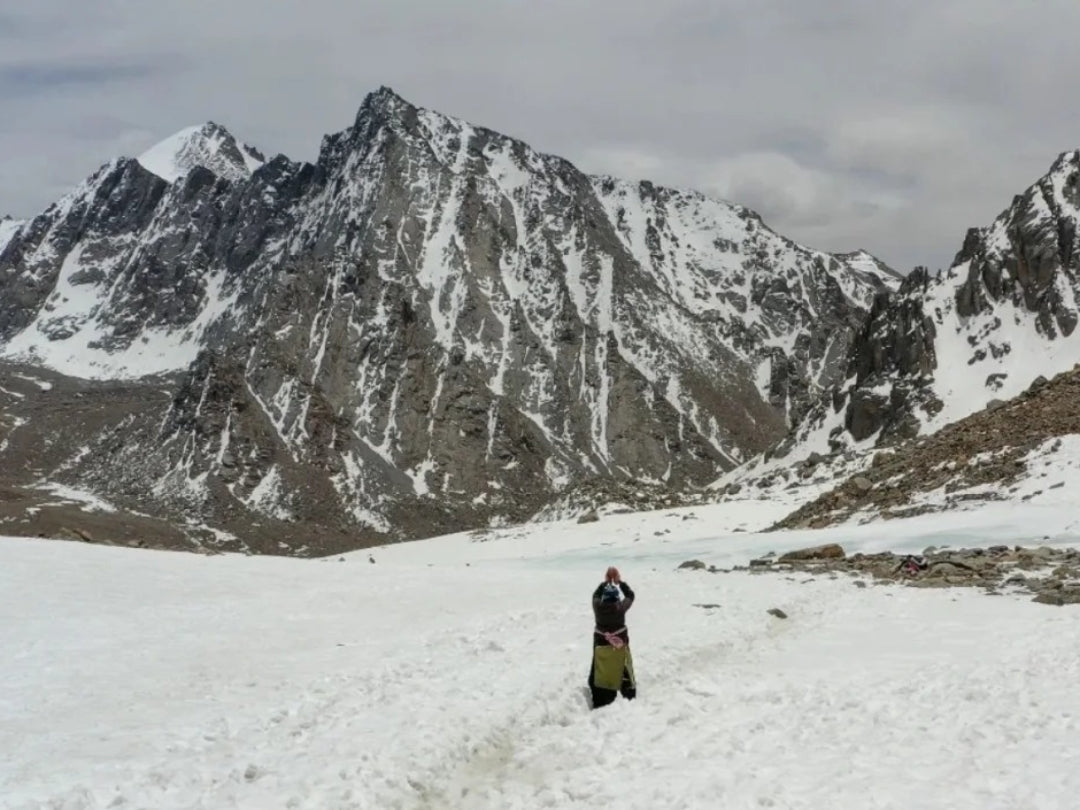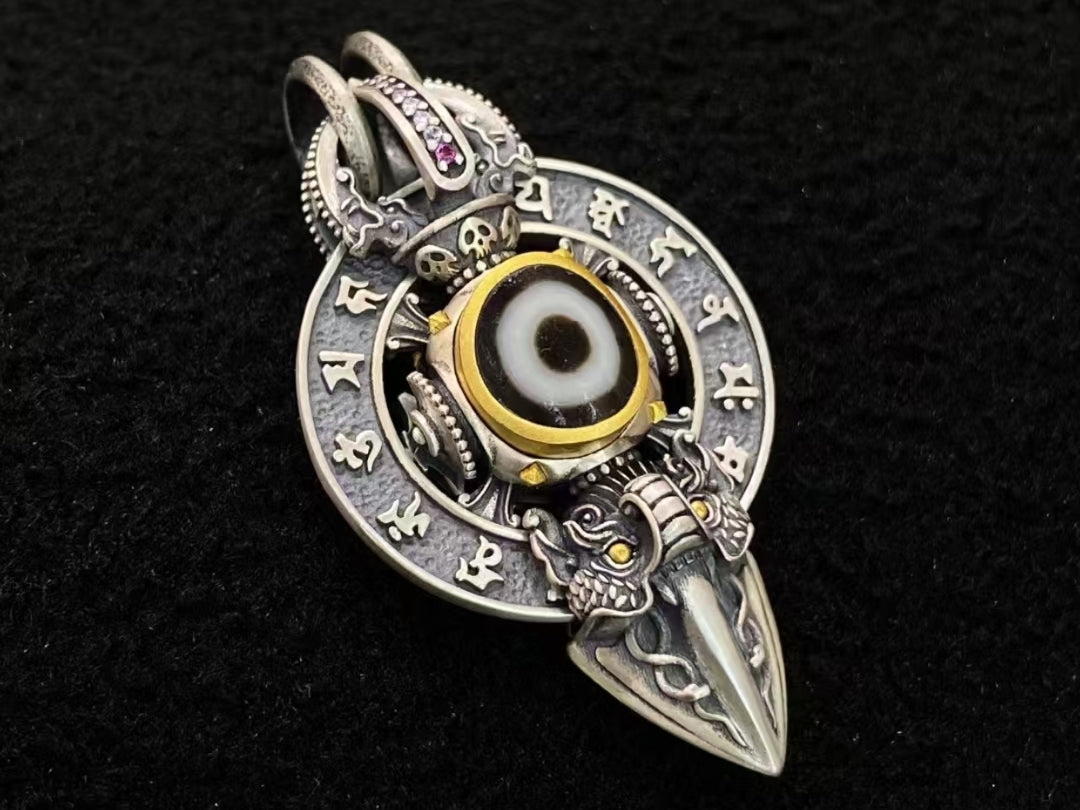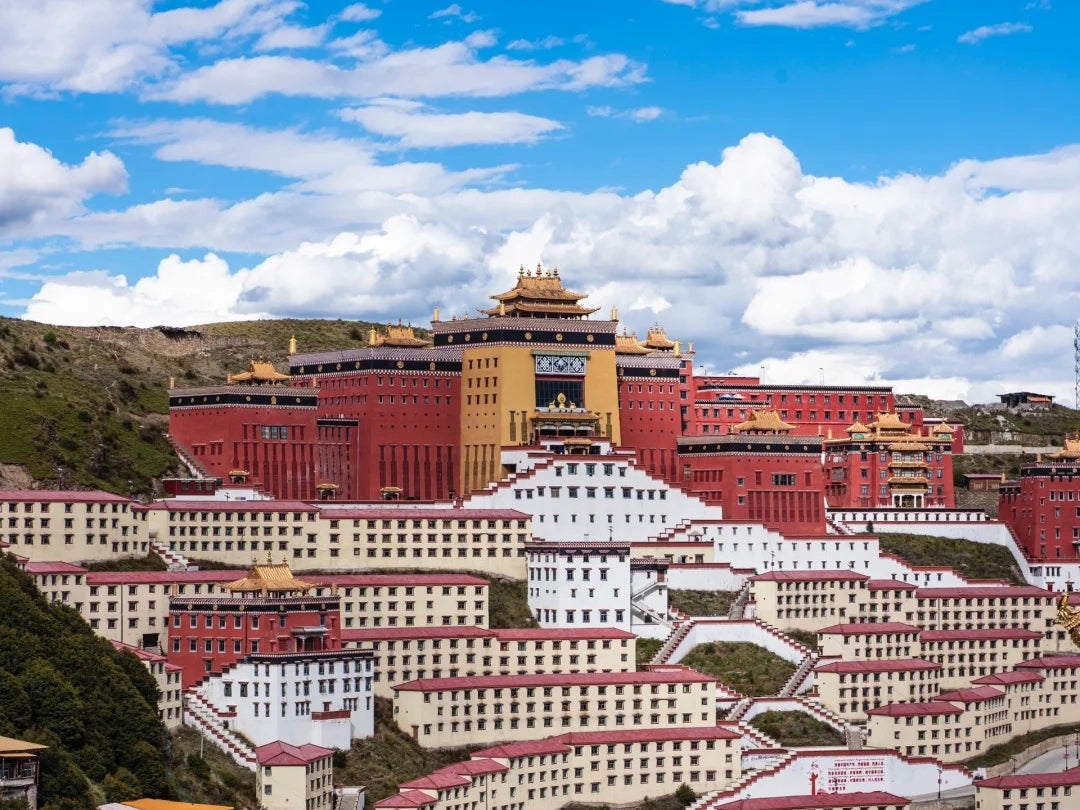Walking a kora is a way of moving prayer through the body. In Tibetan Buddhism, circumambulation—moving mindfully around a sacred site—becomes a practice that folds intention into every step. This article explains what a kora is, highlights famous routes (from the compact Barkhor circuit in Lhasa to the epic Mount Kailash pilgrimage), outlines common ritual steps and symbolic stops, and describes the keepsakes pilgrims bring home—amulets, miniature Thangkas, and other tokens that hold memory and blessing.

What is a kora, and why walk one?
Kora literally means “circumambulation.” It refers to the devotional act of walking around a sacred object or place—performed clockwise in Tibet—while cultivating focused intention. For many pilgrims, a kora is both an outward journey and an inner one: every physical revolution is an opportunity to recite mantras, make offerings, and transform habitual patterns of mind into compassion and wakefulness. Done slowly, with pauses for prayer or prostration, the practice becomes a moving meditation rather than a performance.

Two famous kora routes: Barkhor and Mount Kailash
Barkhor Circuit (Jokhang Temple, Lhasa)
At the heart of Lhasa, the Barkhor circuit loops around Jokhang Temple and the surrounding market streets, forming a compact, living pilgrimage route where devotion and daily life meet. Pilgrims and locals walk this kora in large numbers—especially during festivals—spinning prayer wheels, touching mani stones, and offering whispered mantras as they move. The circuit is lined with stalls selling Thangkas, prayer beads, amulets, and other ritual items that pilgrims often buy as practical aids or keepsakes.
Mount Kailash Kora (Kailash Parikrama)
By contrast, the kora around Mount Kailash is a multi-day, physically demanding pilgrimage of deep symbolic power. The full circuit is roughly 50+ kilometers and is typically completed in two to three days. The trail includes the high and sacred Drolma La pass (around 5,600 meters), a crossing that many pilgrims regard as a moment of purification—symbolically shedding old patterns as they traverse the pass. Because of its remote altitude and layered religious meaning—shared reverence in Tibetan Buddhism, Hinduism, Jainism, and Bon—the Mount Kailash kora is both a physical test and a potent spiritual rite.

Ritual steps and common practices on a kora
While specifics vary by region and lineage, several practical and symbolic elements recur:
-
Clockwise movement: Circumambulation is performed clockwise so that one’s right side—the side of action and generosity—faces the sacred object.
-
Mantra recitation: Pilgrims commonly recite mantras as they walk; Om Mani Padme Hum is ubiquitous around many Tibetan sites. Mantras can be spoken aloud, chanted, or silently repeated.
-
Prostrations and full-body practice: On particularly sacred stretches (or for those engaging in intensive practice), pilgrims may perform full prostrations at intervals—advancing by touching the ground with forehead, hands, and knees—transforming movement into embodied devotion.
-
Prayer wheels, mani stones, and flags: Along many koras you’ll find mani walls (stone walls carved with the mantra), prayer wheels to spin as you pass, and prayer flags or offerings tied at high points. Passing these objects in the prescribed way is itself part of the practice.
-
Symbolic stops: Pilgrims pause at shrines, sacred springs, or monastery doorways to make offerings, light incense or lamps, and sometimes receive blessings from resident lamas.

Keepsakes from the road: tokens, Thangkas, and amulets
Pilgrims often bring back small objects that anchor memory and blessing. Markets and stalls near kora routes—especially around Barkhor and Lhasa—offer a range of devotional items:
-
Miniature Thangkas: Hand-painted or printed in small sizes, these Thangkas fit inside a gawu (shrine box) or are worn close to the heart. They provide a portable visual focus for meditation.
-
Amulets and metal talismans: Simple metal amulets—often inscribed with a mantra or depicting a protector deity—serve as protective reminders on journeys home.
-
Prayer beads and small prayer wheels: Mala beads, wrist prayer wheels, and tiny rotating pendants let people continue the kora’s motion-as-meditation in daily life.
-
Mani stones and flag fragments: Pilgrims sometimes bring back small pieces of inscribed stone or sections of prayer flag as tangible memorials of their visit.
Buying and carrying these objects is a longstanding part of pilgrimage culture—practical, devotional, and symbolic. Crafts near pilgrimage circuits often produce items intended for ritual use rather than mere decoration.
Practical advice and respectful travel
If you’re planning to walk a kora, keep these practical and ethical pointers in mind:
-
Start with intention: Approach the kora with humility and clear motive rather than tourism-only curiosity.
-
Respect local customs: Walk clockwise, follow monastery rules, and ask before photographing people engaged in devotional acts.
-
Prepare physically and logistically: High-altitude koras (like Mount Kailash) require acclimatization, sturdy footwear, and appropriate permits. Consider hiring local guides who understand both terrain and ritual norms.
-
Support local artisans: When you buy Thangkas, malas, or amulets, seek authentic, respectful sources—this helps sustain local craft traditions and the households that depend on them.
A final note
Kora is a form of prayer that uses the body as a vehicle for compassion. Whether you’re tracing the Barkhor’s market-lined path or facing the raw expanse of Mount Kailash, each step can be a quiet offering: a small, embodied vow toward patience, clarity, and care for others. The keepsakes you bring home—whether a delicate Thangka pendant or a simple mala—are not trophies but portable reminders of a practice: motion turned into meditation.




